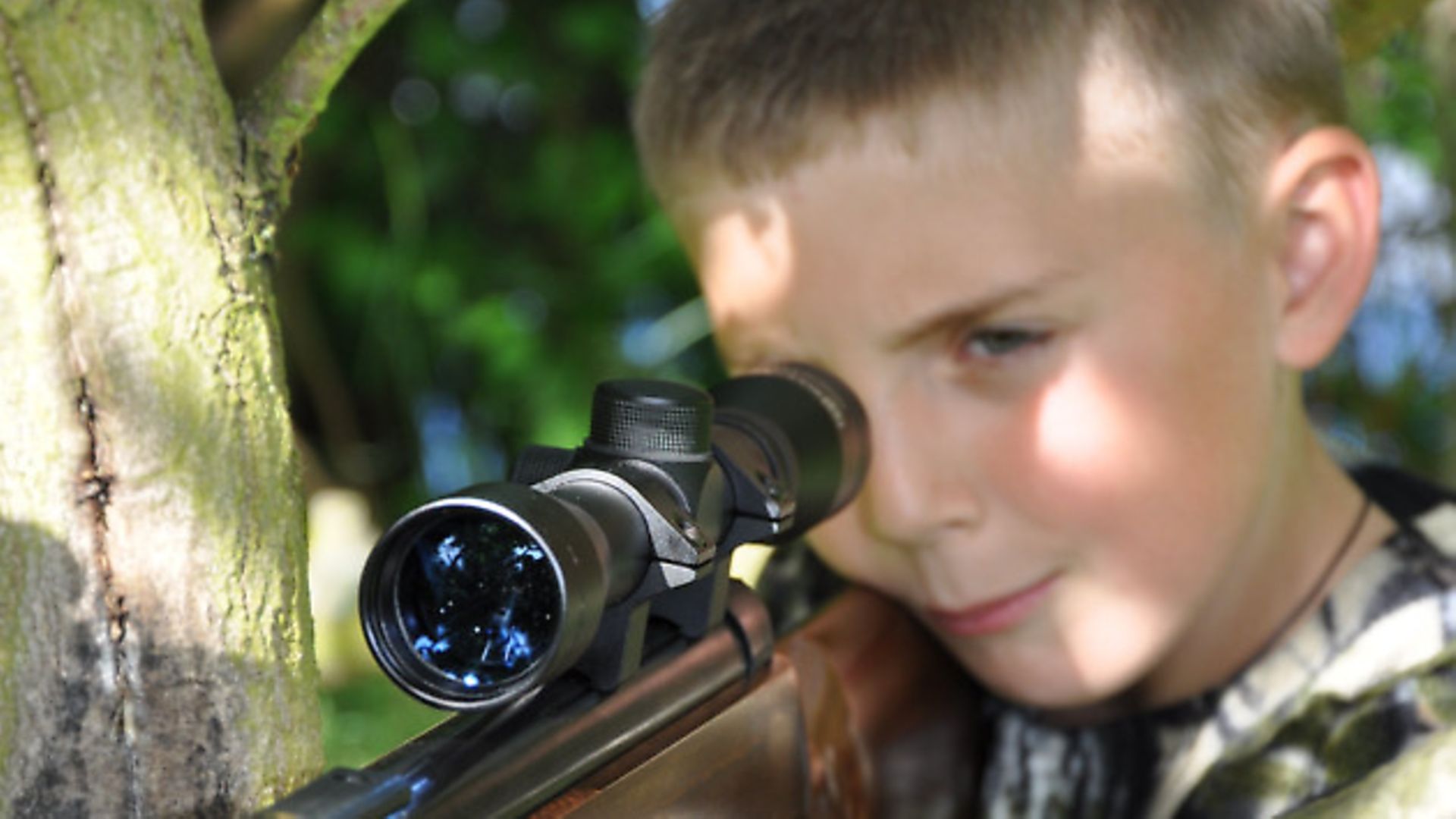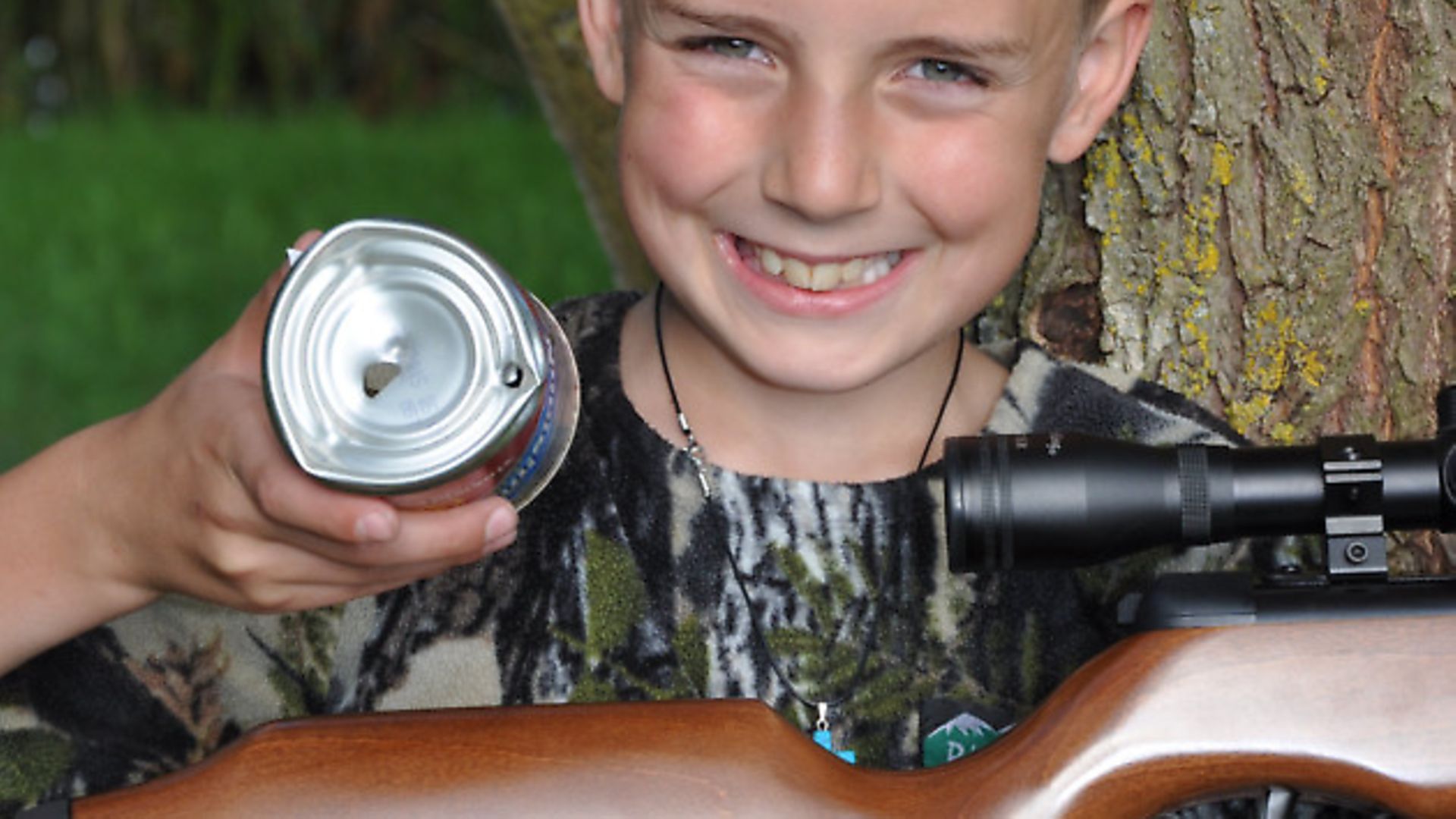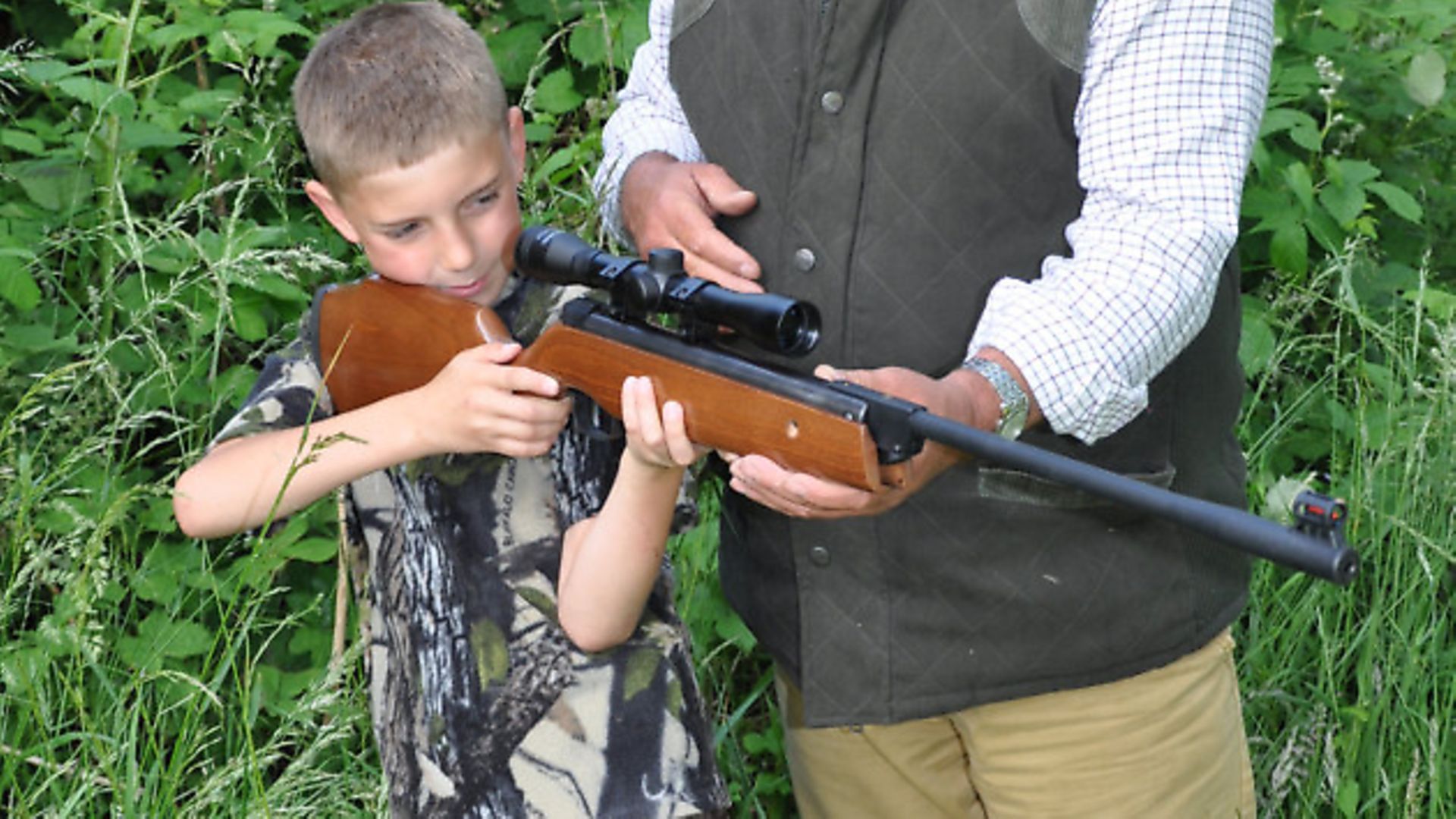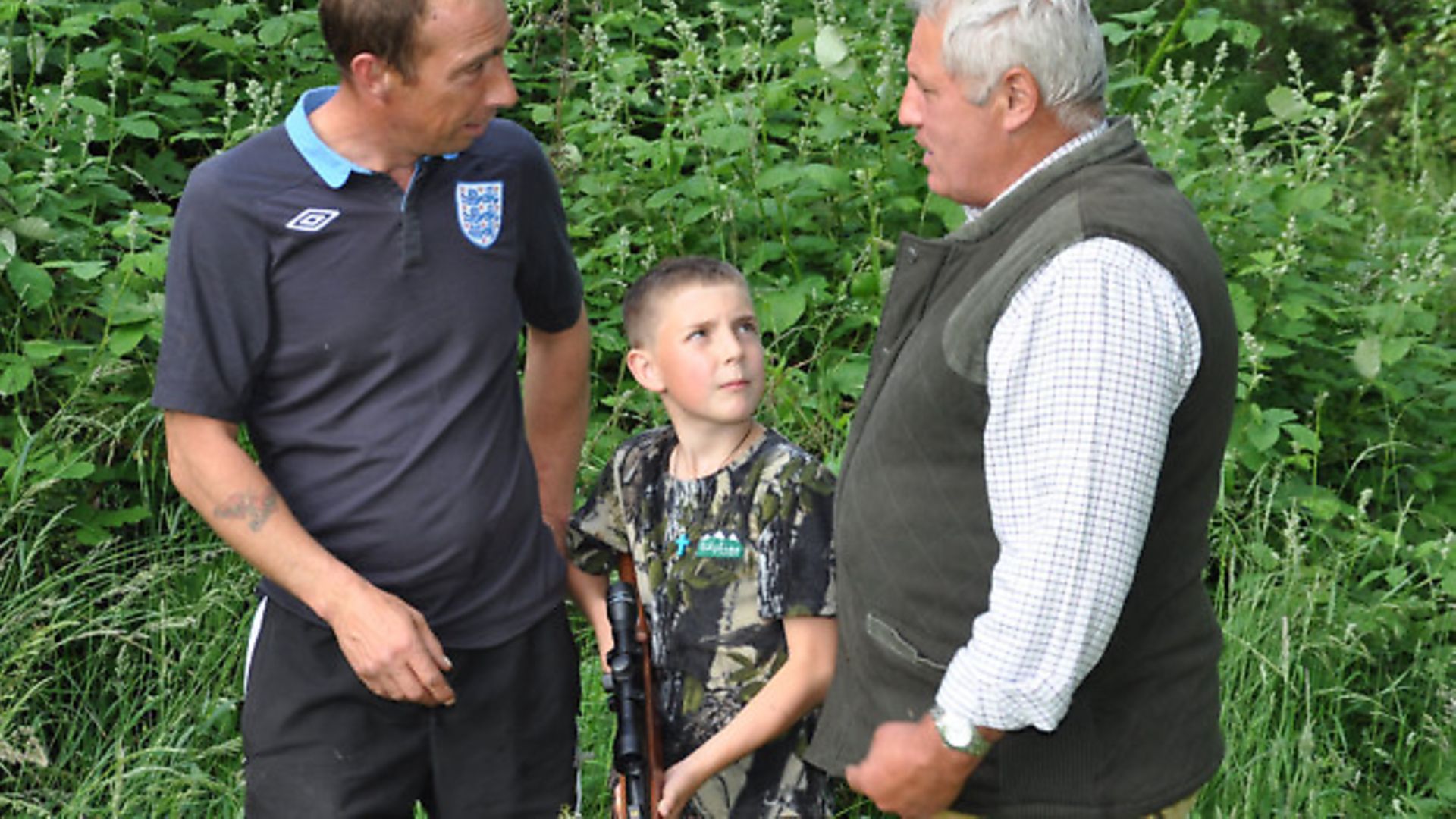George concludes his teaching of a junior airgunner, with some lessons for us all
 credit: Archant
credit: Archant
I’ve been coaching young Billy for around three months now, and the transformation in his shooting has been dramatic. The essentials that every shooter needs are becoming implanted, and Billy is now doing these things without constant reminders from me. I have to say that it’s an absolute pleasure to see these changes and teaching them to Billy has done me a bit of good, too, because it’s reminded me of the core techniques we use to shoot safely and effectively. It has to be admitted that more than a few of these vital skills had, not so much become rusty, but let’s say they weren’t as smooth and shiny as they should have been.
 credit: Archant
credit: Archant
 credit: Archant
credit: Archant
Timely reminders
 credit: Archant
credit: Archant
Billy’s tuition really was built around the very basics, with safe gun handling right at the top of the pile, as of course, it should be. Billy knew from the start that there was nothing ‘advisory’ about my safety rules, and that they applied at all times, whether he was shooting or not. Billy now knows that everyone on the firing range is a safety officer, and that everyone’s safety is everyone’s business. These fundamental lessons were learned faster than anything Billy does at school, and he needed no persuasion of any kind to put in extra time. The boy was keen, and at his age, I’d have been exactly the same.
I based his safety instruction on the usual golden rules about never pointing an airgun, loaded or not, at anything that isn’t a legitimate target, always treating every airgun as though it’s loaded, never shooting until the range area has been checked as safe, and never allowing a single pellet to travel beyond the boundaries of his shooting area. To these I added rules about crossing obstacles with an airgun, what is a safe target and what isn’t, and the correct way to cock and load his air rifle. While I was at it, I passed on the relevant law requirements to his father, because, with Billy being under 14 years of age, his dad would be legally responsible for his actions while shooting.
The lessons that worked best It was no surprise to me that Billy really shone when we reached the ‘shooting’ phase of the teaching, and he shone ever brighter the more proficient he became. There’s no doubt at all that the timeless thrill of hitting the target is the greatest hook in shooting, and I swear I could see the excitement mount as Billy put my teaching into practice.
Oddly, perhaps the most effective lesson I taught Billy, and myself, was to take the time to get each shot right.
The actual amount of time needed to get ready to squeeze the trigger may surprise you, as it did me, although I’ve been shooting all of my life. It was Terry who told me five seconds is all the time anyone needs to compose an accurate shot in the hunting field, and I didn’t believe him until I tried. As it turns out, five seconds is at least a second too long for me, and considering that within my four seconds I incorporate stance, hold, breathing control, trigger technique and follow-through, it’s all the more remarkable – but true all the same.
The version I taught young Billy was a simplified one, mainly because I didn’t want to confuse him and give him too much to think about, but the message amounted to the same as the one I’ve seen Terry give to adult shooters several times now.
Stance, hold and breathing Although the standing stance is by far the least stable, it’s the most ‘natural’ from which to teach, plus I can teach for longer compared to the kneeling stance. Kneeling, while far more stable than standing, soon becomes uncomfortable for the pupil as his foot goes ‘dead’ and ‘pins-and-needles’ sets in.
For standing, I had Billy position his feet slightly wider than shoulder-width, with his body sideways-on to the target. He quickly learned not to grip the rifle tightly, but to let it ‘rest’ in his hands at all times. This is less tiring, it accommodates the rifle’s recoil better, and it’s easier to reproduce for maximum consistency.
He seems to have found his own ‘targetised’ stance, so I let him carry on with that while I made sure he understood one of the most important facts of his shooting life; no one can hold a rifle absolutely still. Not me, not you, not even those Gold medal-winning super-shooters in the Olympics. This led straight on to controlling the rifle’s movement by breathing deeply, and again Billy took to it faster than I could have hoped.
Trigger control
The trick here is to make use of the trigger a calm, deliberate process, rather than having your pupil rip at the trigger as the target appears fleetingly in the cross hairs. This is helped mainly by getting the stance, hold and breathing right, which brings rifle movement under control and reduces the pupil’s urge to ‘snatch’ at the trigger. As ever, success in shooting comes as a link at the end of a chain, where any weak links will wreck the whole thing.
Billy’s trigger technique still needs some work, but he understands what’s required and I know he’ll work on it. This was something else I explained to his dad, who is also a shooting man, so I know the lessons will continue.
Follow-through
The single most productive shooting technique of them all, is correct follow-through. I know that’s quite a statement, but the more I learn about this sport, the more convinced I become that I’m right. Proper follow-through is the easiest skill to learn, too, but that only deepens the mystery of why so few shooters do it.
Follow-through is simply holding aim until the pellet strikes. That’s all there is to it, but it’s a rare thing indeed to see it done correctly. Most airgun shooters lift their heads to look at the target, presumably to see if they’ve hit it, the instant the rifle fires. This sets up weak technique, where the brain tells the muscles to tense even before the rifle fires, and that tension can move the rifle off aim enough to cause a miss. Worse still, is the fact that the shooter won’t know why the miss happened, because everything looked perfect as the shot was taken. This causes frustration, more tension, and eventually the shooter loses enthusiasm, all because he didn’t stay on aim until the pellet hit.
Billy understood what I taught him about staying on aim, and now his technique is good enough for him to see the pellet in flight for most shots, and I encourage him to look for it, because that keeps his after-shot stance stable, his head still and his eye right behind the scope. Try it yourself; I promise your shooting will improve.
The lessons continue
Throughout the three months or so that I’ve coached young Billy, I’ve concentrated on the absolute basics and golden rules as I see them. We began with safe gun handling, and the ‘safety-first, last and always’ theme was continued throughout each lesson, as it will for Billy’s entire shooting life.
With Billy being so young, I knew it would be far more productive if I kept every lesson interesting and with the reward of hitting targets very much part of it. There’s a huge pleasure in connecting with a target, and this reward becomes a powerful teaching aid, especially for youngsters, where attention spans may be shorter.
Great chunks of theory don’t work, in my experience at least, and I made sure to structure my teaching around a system of ‘if you do this, you’ll hit more targets’, followed by a shooting session to prove the worth of what I’d just taught. I kept the time between teaching the various techniques and using them as short as possible, and I know this helps implant the lesson in the best possible way.
Billy and I will still meet up for a lesson or two when time allows, but I’ve left him with a list of homework to be getting on with, and I know he’ll do it, because he loves his shooting and his dad will always be there to supervise until he’s 14 years old and he can shoot alone on property where he has full permission.
Final thoughts
Billy will need to add a whole range of essential skills to his shooting armoury over the next couple of years, including range-estimation, knowledge of trajectory and how that applies to aimpoints, windage application, more stances, and everything else that turns a shooter into a marksman. With the support he has, Billy will get there, of that I have no doubt, and I’m just as sure that the lessons I gave him will have set him on the right path.
The very last thing I know is something I knew already; that teaching youngsters to shoot is the most satisfying and enjoyable part of my sport. I can only recommend having a go at coaching a young shooter to everyone with the ability to do so. The rewards are priceless, and you’ll be doing our sport the world of good. Try it!